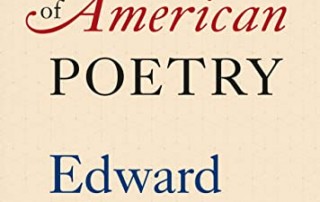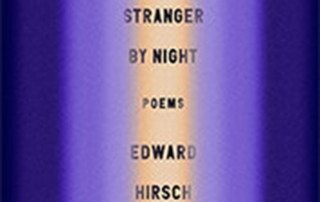
An enlightening, celebratory anthology of the most classic and enduring of forms edited by two major poets.
This illuminating anthology follows the sonnet through its various moments and makers over five and a half centuries. Edward Hirsch and Eavan Boland, two of our foremost poets, focus on vicissitudes, paying particular attention to how individual poets―from Shakespeare to Strand―have claimed these fourteen lines: lengthened them, shortened them, elaborated on them, and, in turn, been defined by them. Three sections―”The Sonnet in the Mirror,” “The Sonnet Goes to Different Lengths,” and “The Sonnet extraordinary durability and its reinventions. The collection opens with personal introductions by the editors, and, in the appendix, they provide “Ten Questions for a Sonnet Workshop” to jump-start a conversation between students and teachers. With more than three hundred poems, The Making of a Sonnet guides readers through a vigorous adventures in craft and practice, right up to its extraordinary resurgence in contemporary poetry.
Pages: 512 pages
Publisher:Norton (2008)
Language: English
ISBN-13: 978-0393333534
THE MAKING OF A SONNET: My Own Acquaintance
The fourteen-line rhyming poem was invented in southern Italy around 1235 or so (“Eternal glory to the inventor of the sonnet,” Paul Valéry proclaimed) and has had an astonishingly durable life ever since. The word sonnet derives from the Italian sonetto, meaning “a little sound” or “a little song,” but the stateliness of the form belies the modesty of the word’s derivation. The sonnet is a small vessel capable of plunging tremendous depths. It is one of the enabling forms of human inwardness.
The sonnet is an obsessive form—compact, expansive—that travels remarkably well. It crosses between countries and languages. It adapts to different meters and reverberates down the centuries. There must be something hardwired into its machinery—a heartbeat, a pulse—that keeps it breathing. How many times over the decades has it been pronounced dead and then somehow revitalized, deconstructed, and then constructed again, refashioned, remade? It darkens and then lightens again. It thinks on its feet.
Something about the spaciousness and brevity of the fourteen-line poem seems to suit the contours of rhetorical argument, especially when the subject is erotic love. The form becomes a medium for the poet to explore his or her capacity to bring together the heart and the head, feeling and thought, the lyrical and the discursive. It is conducive to calculation and experiment—a closed form that keeps opening up. It is generational. It keeps finding poets in places far from its sun-struck origins, in provincial enclaves and outposts, in the suburbs of distant cities, for example, such as Dublin and Chicago.
My own acquaintance with the sonnet came to me in a roundabout way. The form snuck up on me without my knowing it—a stealth music—and insinuated itself inside of me: a little sound, a little song. It carried me away. “I have been one acquainted with the night,” I used to hum to myself under my breath. The pace of the lines—the sound of the sentences—mesmerized me. “I have walked out in rain—and back in rain. / I have outwalked the furthest city light.”
At seventeen, I had begun to write poetry with great energy and determination. I was overwhelmed by feelings I couldn’t understand. I seemed to be perpetually stunned—desolate, exuberant. I needed vessels and containers. I was probably grief-stricken over the loss of my childhood, but I wouldn’t have understood that then. My brain was teeming with ideas, but there couldn’t have been more than two clear thoughts in my head. I was intoxicated by poetry but I didn’t know a single other person who wrote or read the stuff. How could one devote oneself to poetry in a culture that seemed to care so little about it? I had no way of knowing that this question would be one of the recurring agons of American poetry—from Anne Bradstreet to John Berryman.
I was devastated by loneliness, and reading lonely poems somehow made me feel less alone. That’s when I discovered Robert Frost’s “Acquainted with the Night.” I didn’t much like the cracker-barrel Yankee image of Frost that we had picked up at school, but this poem seemed to have been written out of a darker inner spirit. It had a kind of directness, a moody undertow, that appealed to me. There was something respectful about the word “acquainted” paired with the word “night.” It had dignity. It wasn’t overly familiar. It kept its privacy, its wit. I liked the way the speaker of the poem walked out into the night, the way he confronted and coped with darkness. He didn’t explain his feelings away, or apologize for them. I liked the solitary music. I read “Acquainted with the Night” so often that I memorized it without knowing that I was learning it. I used to say it to myself as I walked through the park at night. I remember lying on my back in the forlorn darkness of my teenage room and reciting it aloud.
Acquainted with the Night
I have been one acquainted with the night.
I have walked out in rain—and back in rain.
I have outwalked the furthest city light.
I have looked down the saddest city lane.
I have passed by the watchman on his beat
And dropped my eyes, unwilling to explain.
I have stood still and stopped the sound of feet
When far away an interrupted cry
Came over houses from another street,
But not to call me back or say good-bye;
And further still at an unearthly height,
One luminary clock against the sky
Proclaimed the time was neither wrong nor right.
I have been one acquainted with the night.
I was putting myself to school on Whitman and Ginsberg, and if someone had asked me, I probably would have said that American poetry shunned traditional forms, such as sonnets. I was filled with unearned opinions. This one was partly right, but only partly, since the evidence also suggests otherwise. There has always been a countercurrent of American poets expanding and rethinking traditional forms, sometimes in inherited meters, sometimes in free verse. They tend to think of these forms as organically as possible. A wide range of American poets are included in this book—from Ralph Waldo Emerson to Gwendolyn Brooks, from a homemade modernist like E. E. Cummings to an open field poet like Robert Duncan, from Elinor Wylie to James Merrill, from Edwin Arlington Robinson to Sterling Brown, from Robert Lowell to Ted Berrigan. It was also true that I didn’t at first recognize the form of Frost’s poem. It worked on me before I worked on it.
I wanted to write a poem like Frost’s, a poem with a kind of massive American loneliness at the core, a deep center of solitude, which I also recognized in the paintings of Edward Hopper. I’d still like to write that poem. It occurred to me to count the lines—I was stumbling into becoming a maker—and thus discovered a different kind of sonnet structure. It wasn’t Petrarchan or Shakespearean, the two main types of sonnet form in English. In fact, Frost had borrowed the rhyme scheme from Dante (aba bcb cdc) and written a terza rima sonnet, as Shelley had done in the five sections of “Ode to the West Wind.” The poem was a walk. The rhythm and the rhymes gave the feeling of that walk, of moving forward while looking back. I felt that the music of the poem—the poem itself—had sent me out to the edge of myself and then reeled me back in. It circled back on itself. There was a kind of submission in it—a coping mechanism—that consoled me. It seemed to go beyond right and wrong. It was surrounded by a vast silence. It raised me to an unearthly height and then brought me gently back to earth.
“There are two absorbing facts,” as Emerson formulated it: “I and the Abyss.” The sonnet can be the vessel of that confrontation. Soon I would follow my discovery of the darker Frost and encounter the English Romantic sonnets of John Keats (“When I have fears that I may cease to be / Before my pen has glean’d my teeming brain”) and John Clare (“I feel I am—I only know I am”), the so-called terrible sonnets of Gerard Manley Hopkins (“I wake and feel the fell of dark, not day”). These poems helped seal my vocation. They were written from the margins. The terrible loneliness at the heart of them was inscribed in fourteen lines, the social realm of a prescribed form. This was the great lesson that I learned as an isolated teenager in Chicago. Poetry counts; language mediates. I felt then—and I still feel—that poetry can embody loneliness and bring us into the human community in a fuller way. That loneliness, the feeling of solitude, can be thought through; it can be developed and delivered by a simple form that sacramentalizes a moment in time, a moment out of time—a little sound, a little song.




